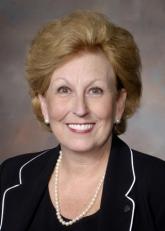News

An increase in Medicaid pay for physicians providing primary care services scheduled for Jan. 1 will not start flowing into practices until at least April 1.
Under the Affordable Care Act, physicians providing certain primary care services to Medicaid patients will be paid at the higher Medicare rate in 2013 and 2014. However, regulations to implement these provisions of the ACA were not issued until last November.
That late date did not allow states enough time to complete all the necessary paperwork to start paying physicians at the higher rate, according to Matt Salo, executive director of the National Association of Medicaid Directors.
"I’m betting most states won’t get money flowing until March 31 or so – the end of the quarter – but that it will be retroactive to January 1," Mr. Salo said in an interview.
The Centers for Medicare and Medicaid Services (CMS) gave states until Mar. 31 to submit a plan amendment outlining how they will pay physicians the new rates. States also must work out how to verify physician eligibility, which could delay even further the pay increase.
"This is a very complex issue, and the eligibility attestation is just one of a host of challenges we’ll need to figure out between now and then," Mr. Salo said.
Doctors have registered their concern in letters to the National Association of Medicaid Directors and the National Governors Association.
"We urge states to take the necessary steps to implement the primary care payment increase by filing the required state plan amendment with CMS as soon as possible," according to a letter signed by the American Medical Association, the American Academy of Family Physicians (AAFP), the American College of Physicians, the American Academy of Pediatrics, and the American Osteopathic Association.
The organizations also said that state Medicaid programs should reach out to physicians to let them know they might be eligible for the increased pay, even those who have not previously participated in Medicaid. "This will maximize physician participation," according to the letter.
Mr. Salo said that these concerns were echoed in a letter he received from the Medical Group Management Association.
"We are hearing concerns from our members, who have inquired about the increased payments with their state Medicaid agency, that many Medicaid customer service representatives or agency staff members say they are unaware that this increased payment exists and have no further information to provide," wrote Dr. Susan Turney, president and CEO of the MGMA.
She, too, said that state Medicaid agencies should get the word out to physicians that they will be able to seek an increase in pay.
According to the law, doctors who are board certified by the American Board of Medical Specialties, the American Osteopathic Association, and the American Board of Physician Specialties will receive Medicare rates for evaluation and management (E&M) codes between 99201 and 99499 and vaccine administration codes 90460, 90461, 90471, 90472, 90473, and 90474. The codes also cover hospital observation and consultation for inpatient services provided by nonadmitting physicians, emergency department services, and critical care services.
Emergency physicians and obstetricians cannot, however, be compensated at the Medicare level for services under Medicaid.
According to the AAFP, certain other E&M codes not normally paid by Medicare will also be covered, including new patient/initial comprehensive preventive medicine codes 99381-99387; risk factor and behavioral intervention codes 99401-99404, 99408, 99409, 99411, 99412, 99420 and 99429; and E&M/non face-to-face physician service codes 99441-99444, among others.
If a state Medicaid program does not currently pay for those services, it will not be covered under the new rates, according to the AAFP.
Physicians likely will have to prove either that they are board certified in an eligible specialty or subspecialty and/or that 60% of their Medicaid claims for the prior year were for the E&M codes specified, according to the American College of Physicians. CMS has compiled a list of frequently asked questions on the higher rate on its website.
CMS estimated in November that some $5.6 billion in additional money would go to physicians in 2013 and $5.7 billion additional in 2014.
While many physicians may not have counted on that money starting to come in on Jan. 1, "everyone would have liked that," Dr. Reid Blackwelder, president-elect of the AAFP, said in an interview.
"We fully expect most states to be up and running probably sometime in the next 3-6 months, with payments being retroactive," he said.

